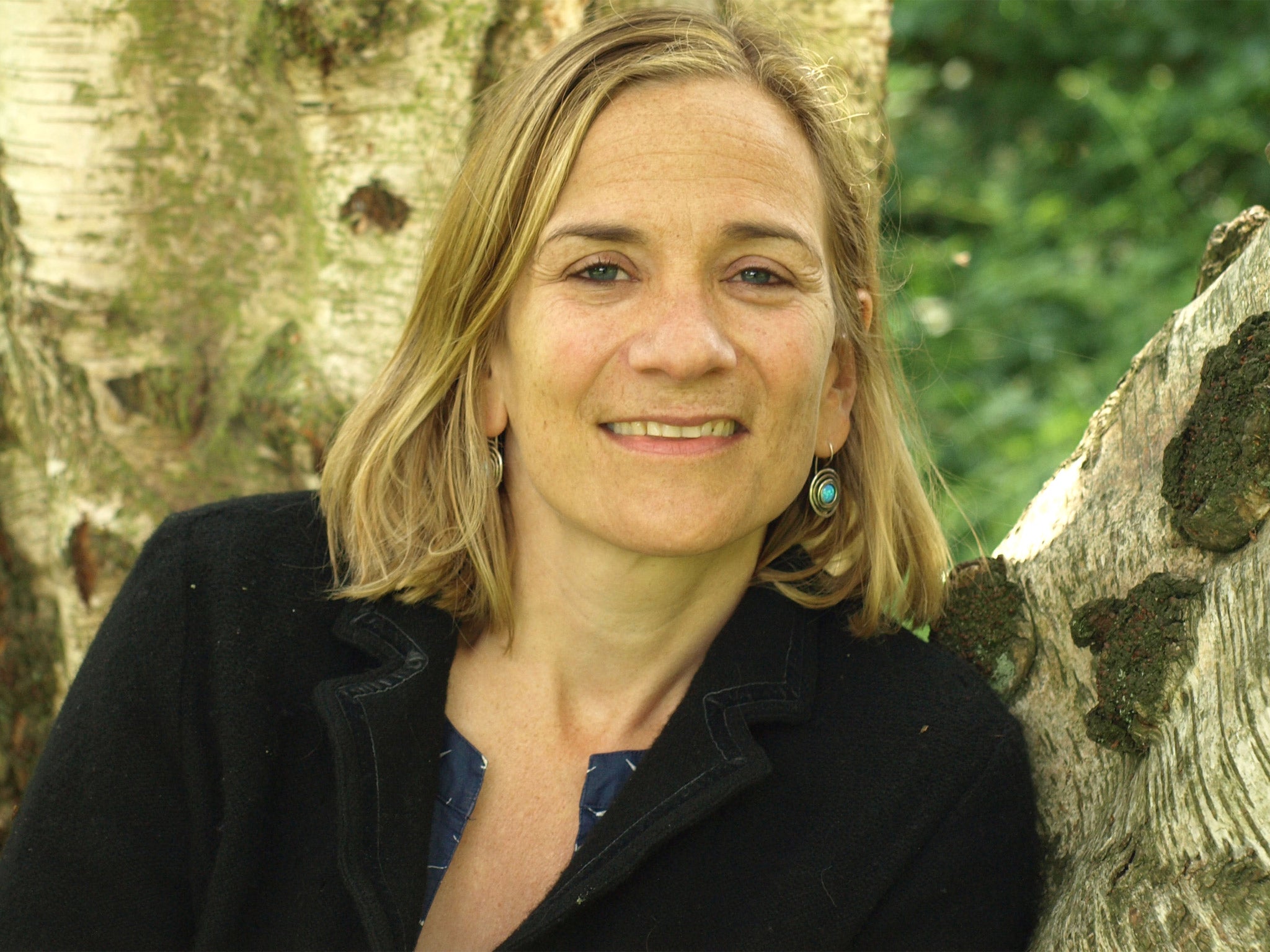Things we do in bed: What happened when novelist Tracy Chevalier took up quilting
Inspired by the heroine of her new book, the ‘Girl with a Pearl Earring’ novelist Tracy Chevalier has curated an exhibition of quilts

In Tracy Chevalier’s latest novel, the heroine is a quilter. The Last Runaway follows Honour Bright as she emigrates from Dorset to Ohio in the mid 19th century.
“I like my characters to do something and quilting was very popular at the time,” says Chevalier. “There were very different aesthetics. In America it was appliqué in red and green. Bold colours like the brashness of the American women Honour encountered. She comes from an older society, more sophisticated, more jaded. English patchwork was subtle. The American quilts are the way Americans are: quick, practical, striking and easy to use. I thought this idea could work well.”
For research, Chevalier learnt to quilt, and became so enamoured she’s now curating a show of historical and contemporary quilts at Danson House in Bexleyheath, Kent. Things We Do in Bed explores five themes: birth, sleep, sex, illness and death.
A spectacular quilt by Grayson Perry hangs in the opening “birth” room. From a distance, jewelled colours glow within an intricate design. Up close, the shapes reveal themselves as translucent foetuses, red veined, curled around a blood-red placenta. This quilt, called Right to Life, is Perry’s response to America’s abortion debate.
The “sleep” room feels sombre, with an iron bed covered with a quilt made by prisoners, mostly men. Inmates responded with varied designs: one square shows an eye open during sleep, which reflects the continuous tension inside prison; another has chain stitches over a small cell. A melting clock reveals how time distorts during prison life, and there’s humour with embroidered words: “Switch that bloody torch off.”
Sex occupies the smallest room. A tiny red room contains a quilt by Sara Impey in the shape of an oversized chain, which hangs from the ceiling. It could be a soft reference to sado-masochism, although the space is so small it appears almost prudish.
“I spent a lot of time worrying about this room because a sex room could be tasteful or raunchy. I found that quilts and nudes didn’t really work. I thought it was going to be easy and then it turned out to be the hardest room.”
The “illness” room contains a quilt by Sue Watters, made while her husband lay dying of Alzheimer’s. Becky Knight sewed stones and painkillers into her quilt to reflect depression. A contemporary quilt by Karina Thompson uses digital technology to show the movement of a single heartbeat. A tragic quilt of white hexagons between transparent sheets tells the story of Christine Chester, whose son drove over Beachy Head. He survived and the patchwork is made of sympathy letters from friends and family.
Illness leads to death, marked with a stunning 19th-century widow’s quilt titled Darts of Death: an elaborately quilted white fabric lined with black darts in the shape of palms, like those thrown before Jesus on Palm Sunday. An unsettling piece in the “death” room called Memoriam, by Michele Walker, shows shiny grey fabric rimmed with twists of steel wool, plaited and frizzed. It symbolises Walker’s mother, who obsessively twisted and pulled at her hair during her struggle with dementia.
There’s a melancholy feel to the show. “I think that might be me,” says Chevalier. “I don’t write funny books. I suppose a lot of joyful things go on in bed. Sex is joyful. But I think this show represents me. I find it very hard to write about sex in books. The Last Runaway has only two paragraphs of it, because I find it embarrassing. Most sex scenes in films and books are embarrassing, because they’re very rarely done well. The sex room is oblique which reflects me.
“The sleep room is not cosy or comforting, but about disrupted sleep and being unhappy. My mother died when I was eight and perhaps this shaded my view of life. There’s a lot of death in my books. This whole show leads to the death room. But then of course it would, because it’s the cycle of life.” In The Last Runway, quilting gives the heroine reassurance and a sense of familiarity as she faces the challenges of a new and occasionally hostile environment. The quilts in Chevalier’s show soothed their makers through painful times.
Chevalier compares curating a show to novel-writing. The process of decision making and selecting felt similar. “We want our books to find an audience, and there’s nothing worse than it not selling. You don’t want to spend all that time and then have 500 copies sell. We write for people to read it. More people are writing now. I go into a bookshop and I’m depressed by the competition.”
Since writing Girl with a Pearl Earring, which sold four million copies, Chevalier has written five more works of historical fiction. But still it’s her second, published in 1998, that most people know her for. She’s working on one about trees, but still gets calls to discuss Vermeer, and is always introduced as the author of Girl with a Pearl Earring.
“I feel incredibly lucky I got that approbation,” she says. “The book and film sealed my reputation. I’m very grateful, but the difficult side is that everything I do is compared to it. Nothing I’ve done since has come near, and it’s probably how it will be all my life.”
Things We Do in Bed, Danson House, Bexleyheath, Kent (www.bexleyheritagetrust.org.uk) to 31 October
Subscribe to Independent Premium to bookmark this article
Want to bookmark your favourite articles and stories to read or reference later? Start your Independent Premium subscription today.

Join our commenting forum
Join thought-provoking conversations, follow other Independent readers and see their replies